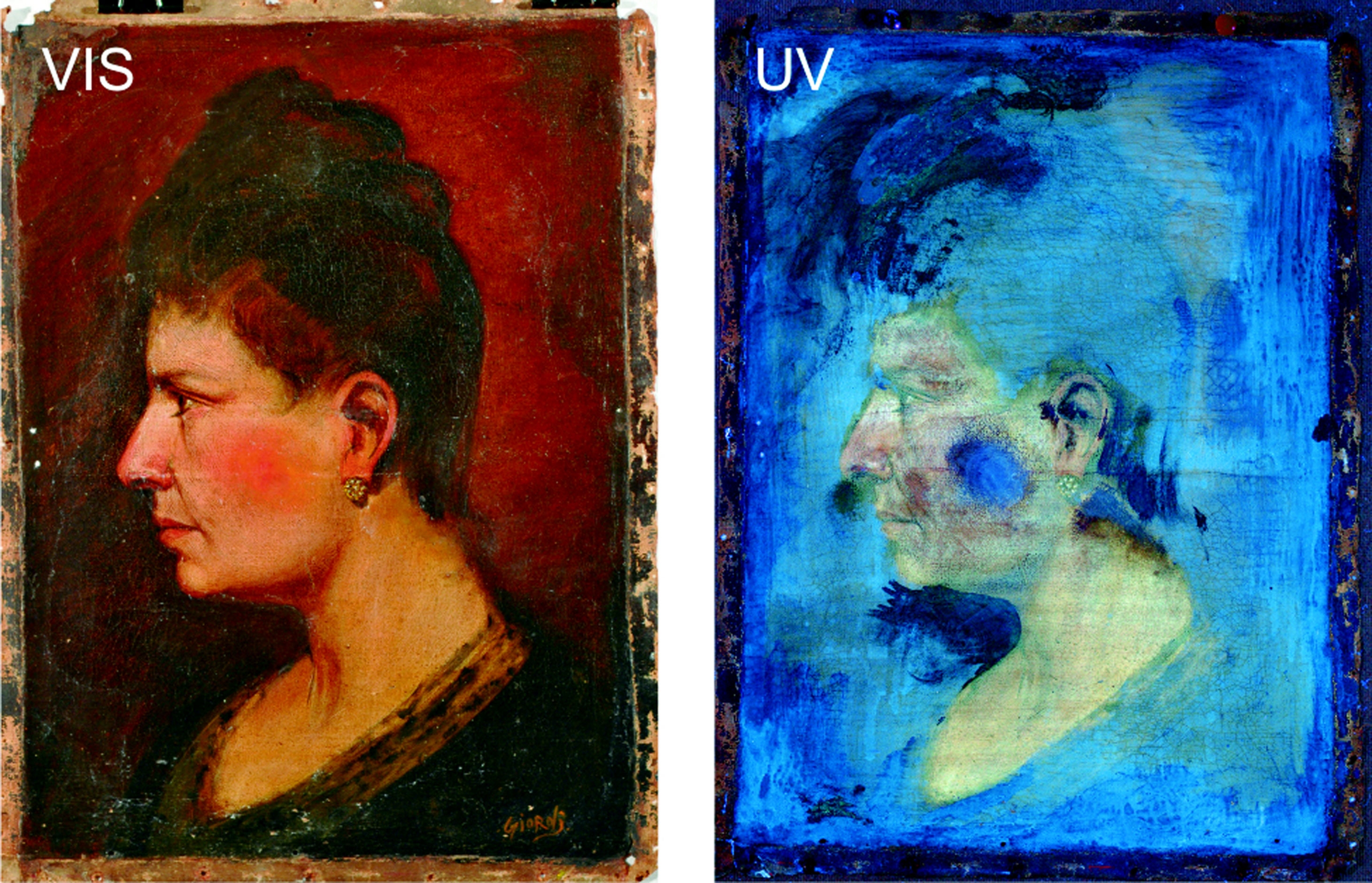A technique developed to take three dimensional, real time images of the retina is also useful for detecting evidence of fraud in paintings, according to research published in the journal Accounts of Chemical Research this month.
Piotr Targowski and colleagues at Nicolaus Copernicus Univeristy in Torun, Poland, realised that the technique of Optical Coherence Tomography, or OCT, should be able to image the layers of a painting, just as it does in biological tissue such as the retina.
 |
| The oil painting on the left fluoresces when exposed to ultraviolet light (right), but evidence of signature forgery remained unseen until a new non-invasive imaging technique was used. © Waldemar Grzesik, Institute for the Study, Restoration and Conservation of Cultural Heritage, Nicolaus Copernicus University |
OCT can be thought of as the light version of ultrasound. A beam of light, usually at near infra-red wavelengths, is sent into a tissue, and the reflected light is collected. Much of the light is scattered, and so will not produce an image, but OCT filters this scattered light to produce an image much like ultrasound. It can produce a high resolution, three dimensional, real time image, though it doesn't penetrate very deeply into the tissue.
Paintings are, usually, built up in layers. The very back of the painting will be the canvas itself, but the artist will often apply a layer of adhesive to this, to make sure future layers stick properly. You may then get a primer layer, an outine, various layers of coloured paint, or semitransparent glaze, and then a protective varnish. Clearly, each layer will be incredibly thin, but this is where the high resolution of OCT comes into it's own.
It's important for conservation purposes to understand the stratigraphy of a painting, and the most common way to do this is to cut a sample of the paining away, embed it in resin and observe it under a microscope.
OCT allows you do image all of the layers without even touching the painting, down to the micrometer level.
Yes. By imaging all of the layers on a painting, you can easily see where something has been painted over, or added at a later date. An example given in the paper is of a painting of St Leonard, a Franciscan monk in painted in 1797. The painting bears the inscription "St Leonard" in one corner, but as he wasn't beatified until 1867, either the inscription or the date must be wrong.
Using OCT they could show that the layer containing the date was part of the deep structure of the painting, while the inscription of "St Leonard" lies on top of the thick coat of varnish that covers the original black background. They could also identify an earlier inscription, which must have been painted over when Leonard was canonised.
This same technique could be used to spot less well meaning alterations!










Comments
Add a comment